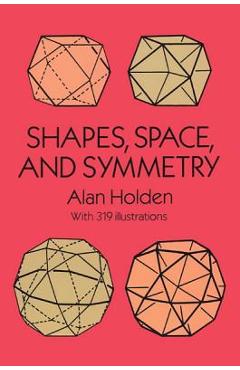Shapes, Space, and Symmetry - Alan Holden

Detalii Shapes, Space, and Symmetry -
libris.ro
85.34 Lei
106.67 Lei
Mathematics
Alan Holden
Shapes, Space, and Symmetry - - Disponibil la libris.ro
Pe YEO găsești Shapes, Space, and Symmetry - de la Alan Holden, în categoria Mathematics.
Indiferent de nevoile tale, Shapes, Space, and Symmetry - Alan Holden din categoria Mathematics îți poate aduce un echilibru perfect între calitate și preț, cu avantaje practice și moderne.
Preț: 85.34 Lei
Caracteristicile produsului Shapes, Space, and Symmetry -
Comandă Shapes, Space, and Symmetry - Online, Simplu și Rapid
Prin intermediul platformei YEO, poți comanda Shapes, Space, and Symmetry - de la libris.ro rapid și în siguranță. Bucură-te de o experiență de cumpărături online optimizată și descoperă cele mai bune oferte actualizate constant.
Descriere magazin:
Altogether a most instructive, entertaining, and esthetically pleasing book. -- Science. Since the ancient Greeks, the visualization of space has been a challenge that has intrigued men of learning. Through centuries of thoughtful looking, a number of three-dimensional figures or polyhedral, as the Greeks called them, have been discovered, admired, and wondered at for their mathematical elegance and beauty. And they have been put to use in remarkably diverse ways by engineers and builders, chemists and crystallographers, architects and sculptors. This book describes very clearly and simply, and illustrates with beautiful photographs of models, a great number of three-dimensional figures, all but a few consisting of plane faces bounded by straight lines. It examines the nine regular solids -- the five commonly called Platonic, described by Theaetetus in the fourth century B.C., and the four called Kepler-Poinsot, two each of which were discovered by Kepler and Poinsot many centuries later. And it examines many variations obtained by truncation, stellation, dualization, and compounding. Writing for the layman as well as the student or professional in mathematics, Alan Holden explains the structure of the figures and demonstrates how they can be used to explain mathematics visually rather than by symbol systems, an effort hailed by Scientific American magazine as a victory of clear, connected thinking over the theorematic method. At the end of the book the author includes a section containing instructions for constructing cardboard models.

Produse asemănătoare

Measures, Shape and Space - Year 8 (Developing Numeracy)
![]() anticexlibris.ro
anticexlibris.ro
Actualizat in 28/10/2025
39.99 Lei

One Giant Leap: Iconic and Inspiring Space Race Inventions That Shaped History, Paperback/Charles Pappas
![]() elefant.ro
elefant.ro
Actualizat in 26/10/2025
108.99 Lei

Out Of Space (revised And Expanded). How UK Cities Shaped Rave Culture, Paperback/Jim Ottewill
![]() elefant.ro
elefant.ro
Actualizat in 26/10/2025
108.99 Lei